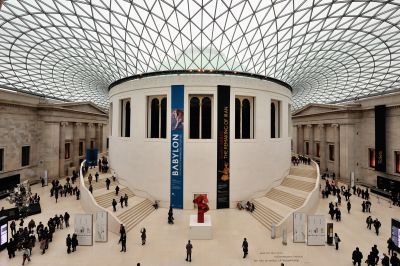| |
3 of Europe's Best Free Museums

The British Museum
It would take a lifetime to fully experience just the major museums of Europe, but if you add in all the small, specialist, sometimes private collections as well, you'd need more than one! While the majority charge an entry fee, there are plenty that don't, or are free on certain days. Here's a look at some of Europe's finest.
The British Museum, London
Without doubt one of the finest collections of cultural artefacts from across the world, the British Museum contains exhibits from throughout the history of civilisation. It's often said that you can't understand the present without understanding the past; what becomes clear while wandering the galleries is that people from thousands of years ago, and thousands of miles away, were more similar to us than we might think. Today, while millions of people around the world play games online, the amount of time that people have been gambling for fun can be difficult to comprehend. Visitors to the museum can see one of the earliest known games, in the form of a set of bone dice from Pakistan, thought to be around 5000 years old. More recent, though still ancient gaming exhibits include a 2300 year-old Greek sculpture of two young women playing "Astragalos", another game using bone pieces, and very similar to Jacks.
The Stadsarchief, Amsterdam
Amsterdam might be best known for a combination of exotic nightlife and attractive canals, but there's plenty to occupy the tourist in search of culture and history. The Rijksmuseum, the Van Gogh Museum and the Anne Frank House are on most peoples' must-visit lists, but the Stadsarchief is also well worth a trip for those interested in the history of the city. It's a huge collection of documents with nearly a third of a million images, that tell the story of individuals, companies and organisations. There's a fascinating array of maps, including an aerial view of the city from 1724, and another that records the disastrous cholera epidemic of 1866.
Museo Storico Della Liberazione, Rome
Our final museum opened in 1957 in the building that was home to the occupying German forces during the Second World War. It served as a detention centre for Jewish prisoners; many were tortured here. It's now dedicated to the liberation of the city in June 1944. The occupation lasted nine months and hundreds of people were killed in the cells that took up much of the building. The museum preserves artefacts that include drawings made by inmates and cell-wall graffiti. Some of the most moving exhibits include photographs of prisoners being released on the day of liberation; June 4th, 1944.
More articles...
|